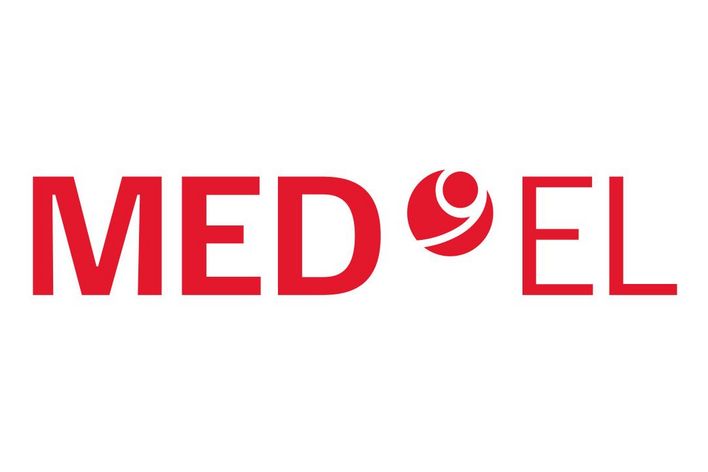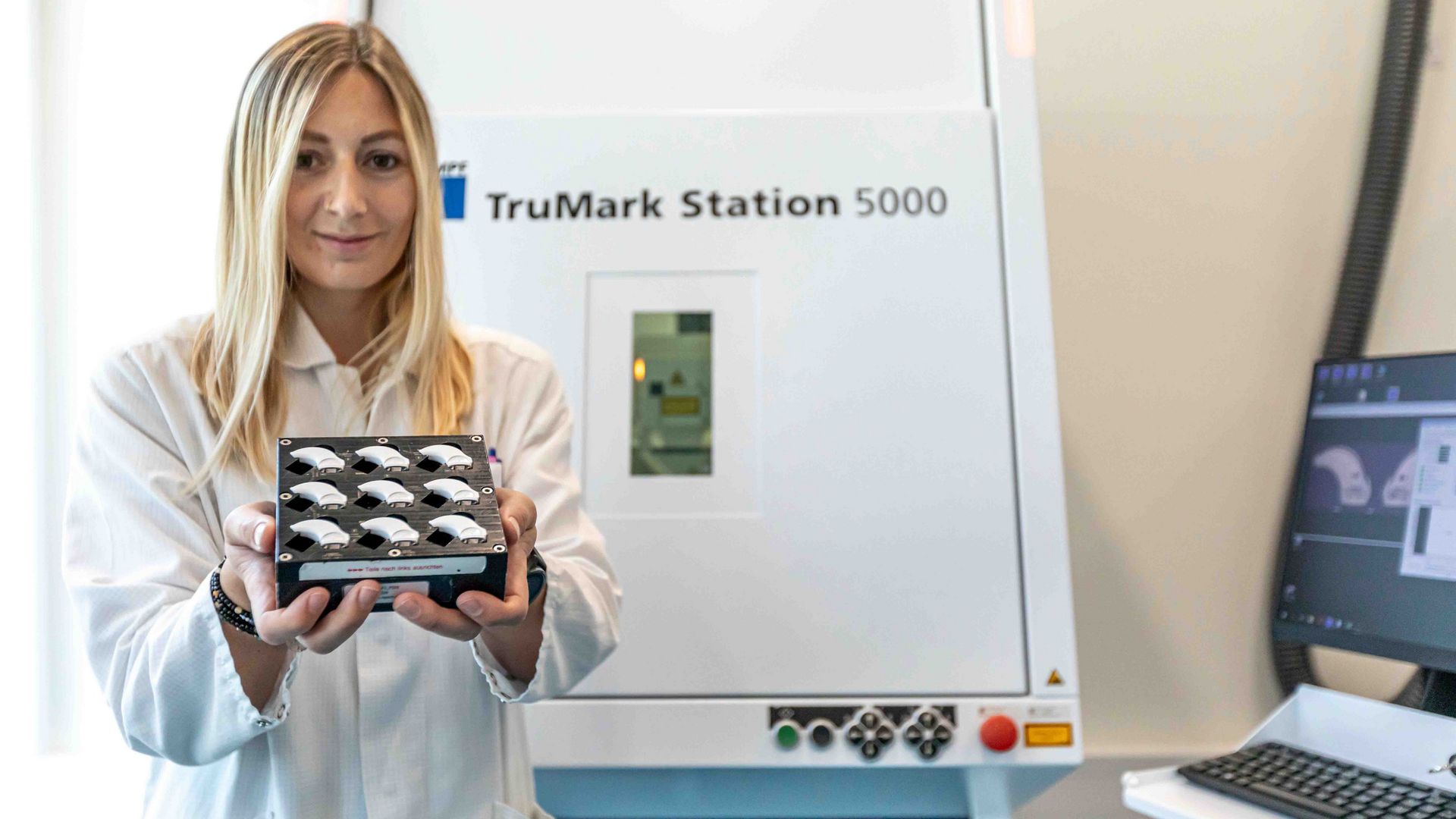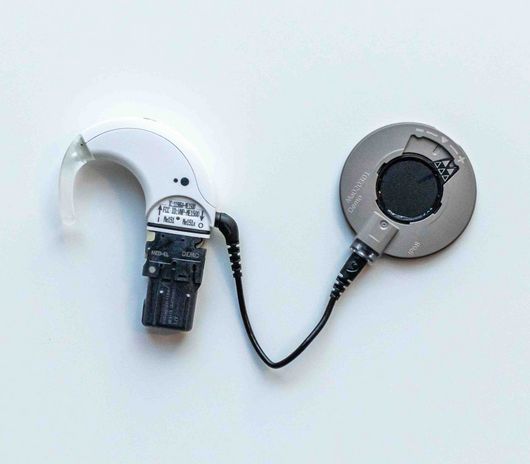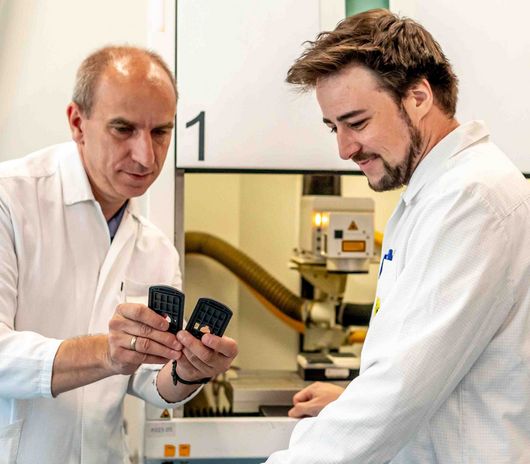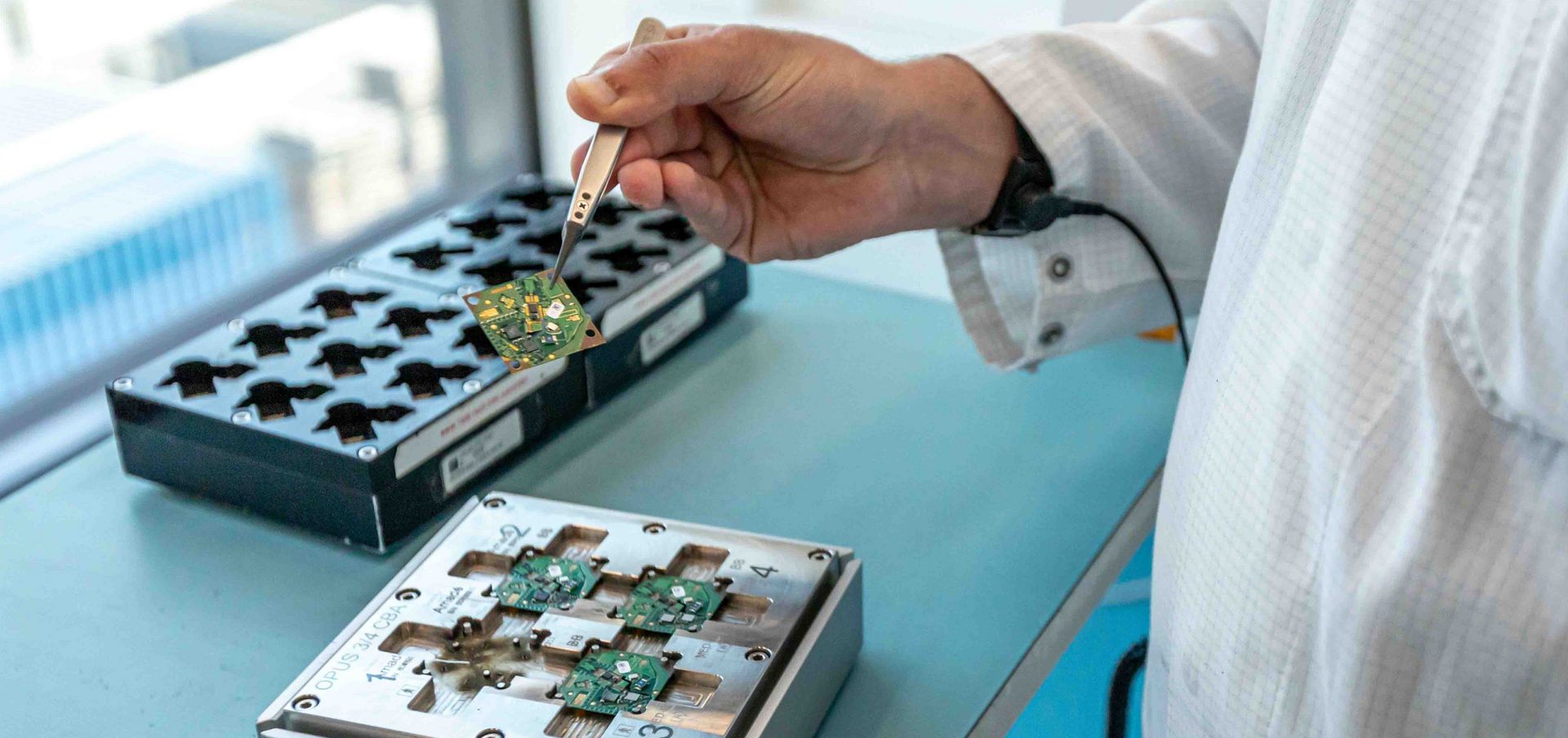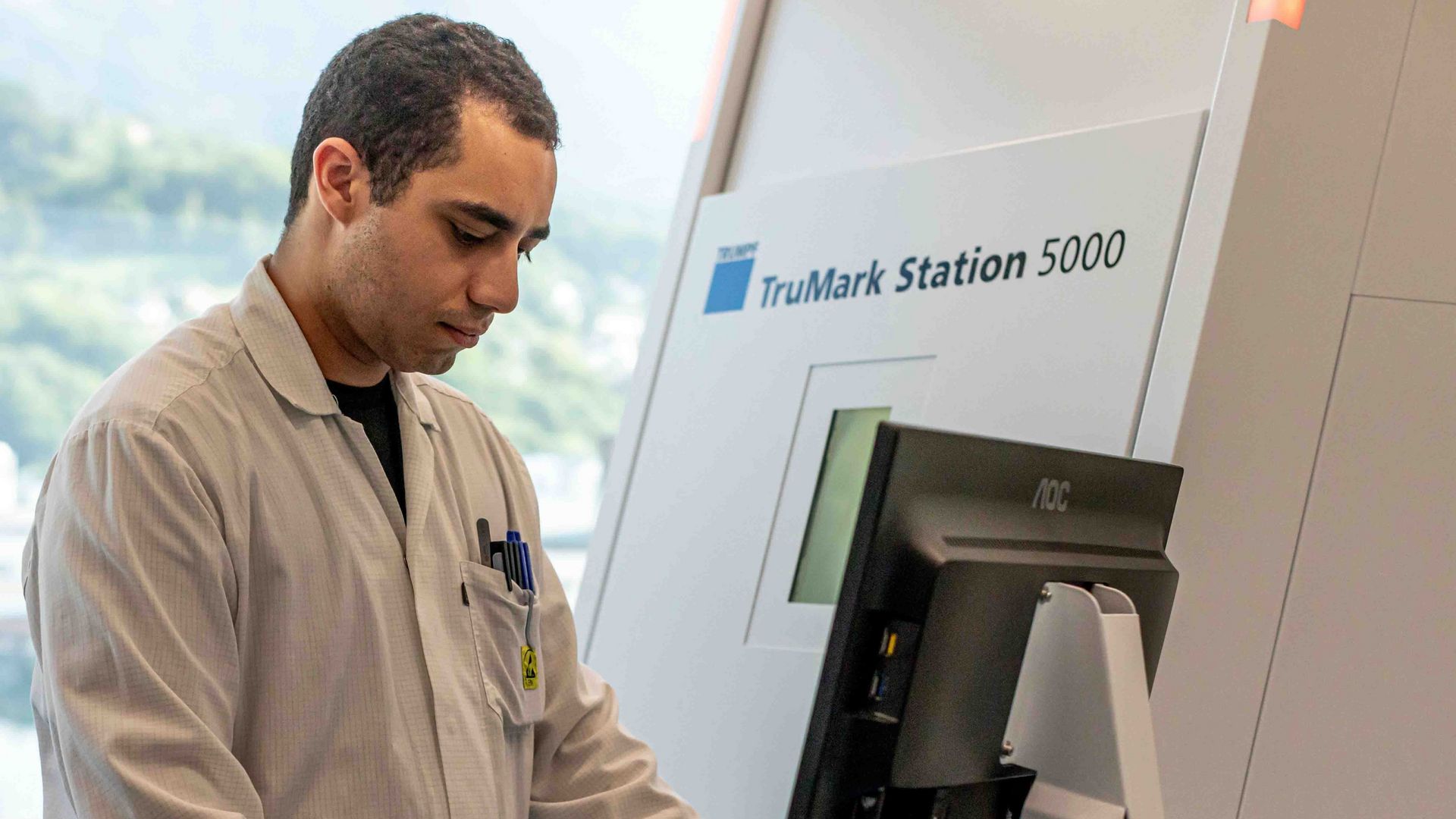Solutions
The marking laser - initially a TRUMPF Vectormark VMC4 - has been providing the necessary flexibility for marking tasks at MED-EL since 2004. Previously, external service providers took over the marking of the parts. Over the long-term, this process was too slow and not agile enough. Christoph Fankhauser, Deputy Group Leader, Manufacturing External Devices at MED-EL, explains: "Due to legal requirements, we have to adapt the markings again and again." Fluctuations in material quality also often require quick countermeasures with the laser so that the markings are still easily legible. "When we have to clarify this with a supplier first, we lose too much time." Laser marking of the components is too important for that. In the form of the first TruMark Station 5000, the company brings another system for this central production step in-house in 2010, taking into account the importance and high quality of marking. "We mainly apply serial numbers and machine-readable UDI codes to metal and plastic parts. In addition, symbols such as arrows and notes that simplify handling for users," says Fankhauser.
Since many of the markings are visible on the final product, MED-EL places great importance on uniform font gradients. A high contrast is crucial for this because it ensures good readability. "And, of course, the markings must be reproducible," Fankhauser emphasizes. "The TruMark laser meets these requirements - even on the tiniest components."
Implementation
Currently, MED-EL has a total of three TruMark Stations 5000 in the production area - the systems are used to mark implant parts as well as external system components and accessories. All marking stations work with TruMark Series 3000 lasers. "In the beginning we used a green laser, but now we rely on infrared light with a wavelength of 1064 nanometers because it can be used very flexibly," says Fankhauser.
MED-EL uses the marking lasers to mark plastic components as well as the metal housings of implants. These are made of titanium; some parts are also made of platinum-iridium. The greatest challenge, however, is the labeling of the plastic parts. "We simply have an enormous variety of products, with more than 1,000 different items that we provide with individual product codes and serial numbers," Fankhauser explains. In addition, given the large quantity of different components that we purchase from suppliers, there may be variations in the material quality of individual batches. The production team has to constantly adjust the laser parameters to this. "At the same time, we naturally have very little space on the components and nevertheless have to ensure that the markings are machine-readable. That's not always easy." But with the combination of concentrated expertise and the precise TruMark marking lasers as tools, the dedicated team overcomes even this challenge.
In series production, MED-EL also uses TruMark lasers for depaneling circuit boards. "We are very experimental and like to try out many things," says Fankhauser. “For example, we use the lasers to mark prototypes and, together with the development department, perform cutting and marking tests on a wide variety of materials.” For his colleague Dietmar Köll, this spirit defines MED-EL: “Even after all these years, the systems have not become simply routine. We are constantly working on new developments and have the ability to set things in motion and implement changes.”


